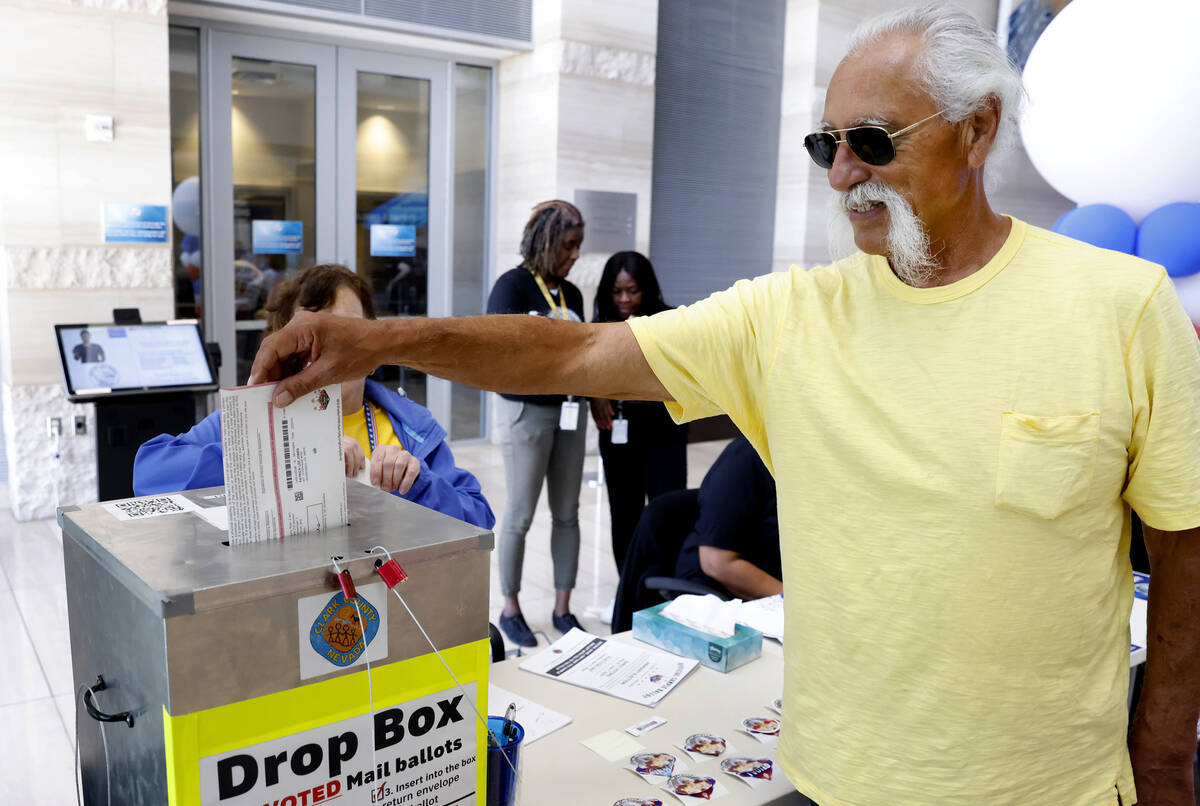As the two-week early voting period for the June 11 primary wrapped up Friday, voter turnout remained low.
More than 208,000 Nevadans participated in either early voting or submitted a mail ballot as of Friday morning, representing around 10.4 percent of eligible registered voters, according to data from the secretary of state’s office.
Nevadans can still mail in their ballots or vote in-person on Election Day.
Around 45 percent of the voters are Democrat, 41 percent are Republican and 15 percent are with another party or were nonpartisan, according to data from the secretary of state’s office.
“When you only have 10 percent turnout, you want it to be more, given the accessibility of the ballot box,” said Secretary of State Cisco Aguilar on Friday.
He thinks the accessibility to vote in Nevada will prove its worth in November’s general election.
“People are just focused on their daily lives, not recognizing that a primary election is taking place,” Aguilar said. It could be that people don’t want to engage in the election at this point because they know the general will be competitive and consuming, he said.
Primary turnout is expected to be lower than previous years. The 2022 primary saw a turnout of around 26 percent, and the 2020 primary election saw nearly 30 percent of total registered voters participating.
Nevada’s Democratic secretary of state said it is important for candidates to recognize that voter engagement is critical, and getting voters to understand the importance of their race.
In Northern Nevada, one of the most competitive races is a Washoe County Commission seat, Aguilar said, as the county commission has the power to hire a new registrar to handle elections, determining the direction of that department.
There’s a number of very competitive races in which a small group of people could potentially swing the results, Aguilar said.
“I don’t think people understand the value of their vote and the power of their vote in some of these races,” Aguilar said. “You talk about the Legislature, this is going to determine public education funding. It’s going to determine health care. There are a lot of priorities that will be determined by these votes.”
Contact Jessica Hill at jehill@reviewjournal.com. Follow @jess_hillyeah on X.

